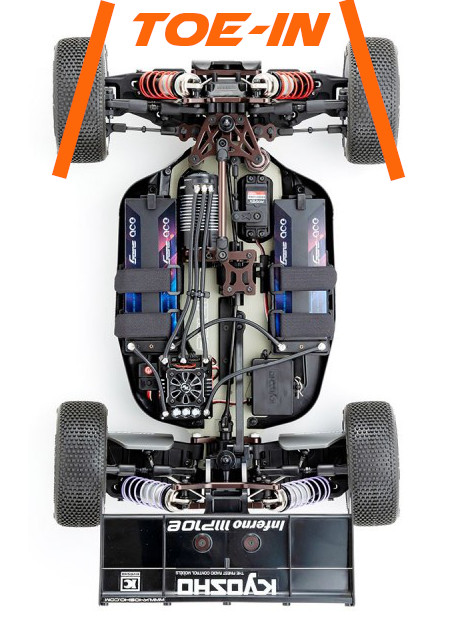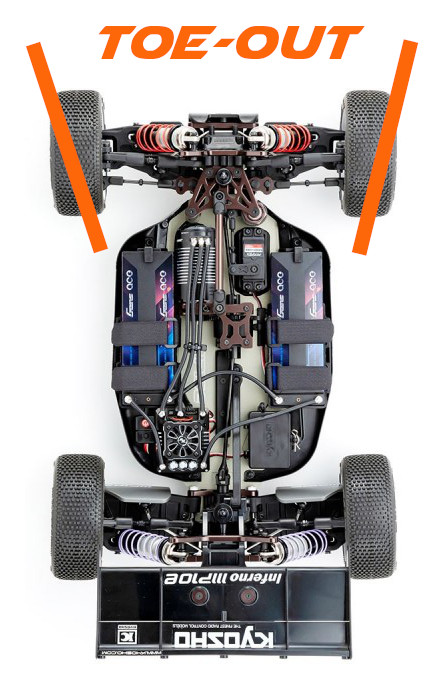Quick tutorial #2: front toe-out or toe-in, why and how to adjust it
Quick tutorials are a simple way to understand the settings of your car in a few minutes.
A subject, a short video, in order to answer 2 essential questions: WHY and HOW?
VIDEO
INTRO
We already covered the influence of toe-in for the rear of your rc cars.
Now let's take a look at the effects of toe-in or toe-out on the front end of your cars.
We talk about toe-in or toe-out the difference in angle between an imaginary straight line in the center of the car, and the angle of the wheels. It is therefore a difference in the parallelism of the wheels.
When the front of the wheels points towards the inside of the car (snowplough skiing), we will speak of toe-in, and conversely toe-out when the front of the wheels points towards the outside of the car.


Statically, this setting can be changed in one, simplest way, by adjusting the length of the tie rods, which connects the knuckle arm with the Ackermann plate in the center of the car.
Dynamically, when travelling down or during steering for example, this setting can be modified in several ways that we will discuss in other tutorials (Positions of the rods on the Ackermann plate, length of the knuckle arms, bump steer washer etc.)
What happens in a straight line (at the start of the steering input)
When you use toe-out, the car will tend to be more stable in a straight line and less responsive.
Indeed, before the outer wheel is really turned in the direction of the turn, you will have to turn the steering wheel even more.
On the contrary, if your wheels are pinched and you touch the steering wheel, the outer wheel will already be steered into the turn. In this case, the car will be more nervous and responsive.
If you are a beginner, we will try to have a more stable car and therefore have a rather opened front end (toe-out).
Into the turn (full steering)
The greater the difference in parallelism between your inner and outer wheels, the greater the difference in radius of the wheels, the more you will make the front differential of the car spin.
The more toe-out on your outer wheel (with a larger turning radius), the faster it will spin into the corner.
With a soft differential (more fluid oil), this difference will be totally absorbed by the differential and you will not have any significant gain.
On the other hand, if you increase the hardness of the differential (within reasonable values of course), the spinning speed will be transmitted to the inner wheel.
The car will therefore have more steering on power into the corner.
TO SUM UP
A car with toe-out will be more stable in a straight line and on changes of direction, but will be more directive in the turn.
So I like my cars with a slight toe-out, about equal to 2° (per wheel if you measure with a set-up bench).
So it's up to you to find your balance and find the setting that best suits you! :-)
TO GO THE EXTRA MILE
As stated above, the adjustment of the Ackerman angle and the bump steer could have a direct effect on the toe-in or the toe-out of the front end during the steering or the compression of the suspension, and therefore on the reactions of the car.
We will see these effects in the next tutorials.
See you soon for a new episode!
The Shark
Reno Savoya
Share this content
